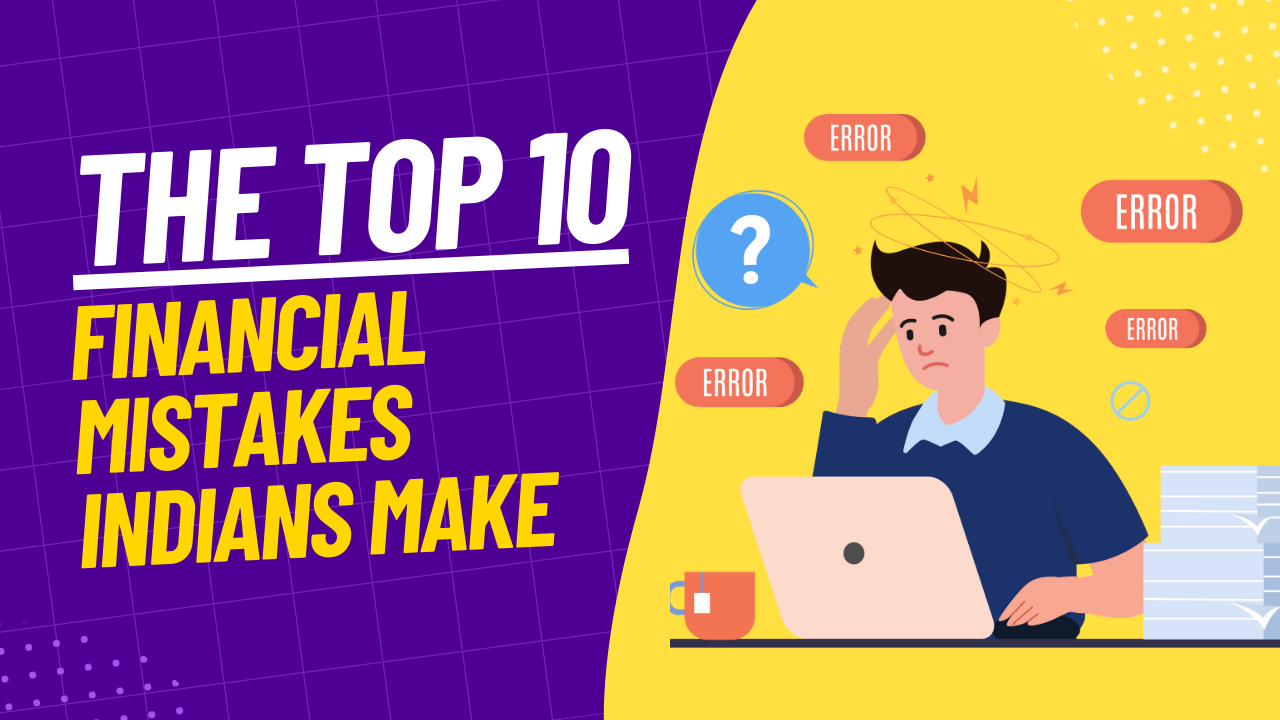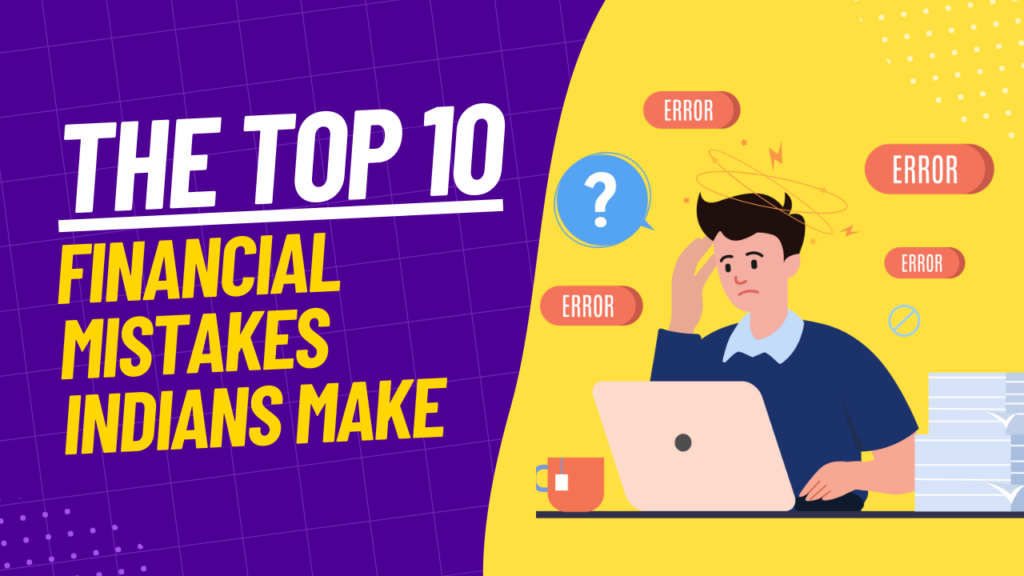Are you looking for a smart way to invest your money and achieve your financial goals? Do you want to diversify your portfolio and reduce your risk exposure? Do you want to enjoy the benefits of professional fund management and market expertise? If your answer is yes, then you should consider investing in mutual funds.

Mutual funds are one of the most popular investment options among individuals in India. They offer a variety of schemes that cater to different risk profiles, investment objectives and time horizons. You can invest in mutual funds through a lump sum or a systematic investment plan (SIP).
But how do you choose the best mutual funds to invest in 2023? What are the factors that you should consider before investing? How can you create a passive income stream that lasts forever with mutual funds? In this blog post, we will answer these questions and more. Read on to find out.
What are Mutual Funds?
A mutual fund is a pool of money collected from many investors and invested in various securities such as stocks, bonds, gold, etc. by a professional fund manager. The fund manager selects the securities based on the investment objective and strategy of the scheme. The investors share the profits or losses of the scheme in proportion to their investments.
Mutual funds are regulated by the Securities and Exchange Board of India (SEBI), which ensures transparency, accountability and investor protection. Mutual funds also offer tax benefits under Section 80C and Section 10(23D) of the Income Tax Act, 1961.
Why Invest in Mutual Funds?
There are many reasons why you should invest in mutual funds, such as:
- Diversification: Mutual funds allow you to invest in a basket of securities across sectors, industries, markets and asset classes. This reduces your risk exposure and helps you benefit from the growth potential of different segments of the economy.
- Professional Management: Mutual funds are managed by qualified and experienced fund managers who have access to market research, analysis and tools. They monitor the performance of the securities and make timely adjustments to optimize the returns and minimize the losses.
- Liquidity: Mutual funds are easy to buy and sell. You can redeem your units at any time at the prevailing net asset value (NAV) of the scheme, subject to exit load and lock-in period if any. You can also switch between schemes within the same fund house without any hassle.
- Affordability: Mutual funds have low entry barriers. You can start investing with as little as Rs. 500 per month through SIPs or Rs. 5,000 as a lump sum. You can also choose from various plans such as regular, direct, growth, dividend, etc. according to your preference and convenience.
- Flexibility: Mutual funds offer a wide range of schemes that suit different investment objectives, risk profiles and time horizons. You can choose from equity, debt, hybrid, sectoral, thematic, index, international, etc. schemes depending on your goals and risk appetite. You can also modify your portfolio according to changing market conditions and personal circumstances.
How to Select the Best Mutual Funds to Invest in 2023?
Selecting the best mutual funds to invest in 2023 is not an easy task. There are thousands of mutual fund schemes available in India that claim to offer superior returns and performance. However, not all schemes are suitable for everyone. You need to consider various factors before investing in any scheme, such as:
- Investment Objective: You need to define your investment objective clearly before choosing a scheme. Your objective could be capital appreciation, income generation, wealth creation, retirement planning, etc. Depending on your objective, you can select a scheme that matches your risk profile and time horizon.
- Fund Performance: You need to evaluate the past performance of the scheme over different time periods such as 1 year, 3 years, 5 years, etc. You should compare the scheme’s returns with its benchmark index and its peer group. You should also look at the consistency and stability of the returns over time.
- Fund Manager: You need to check the credentials and track record of the fund manager who is managing the scheme. You should look at his/her experience, qualification, investment style, philosophy and strategy. You should also check how long he/she has been managing the scheme and how he/she has handled various market scenarios.
- Fund Expenses: You need to consider the expenses involved in investing in a scheme such as entry load, exit load, expense ratio, etc. These expenses reduce your net returns from the scheme. You should opt for schemes that have low or no loads and reasonable expense ratios.
- Fund Size: You need to look at the size of the scheme in terms of assets under management (AUM). A large-sized scheme may indicate popularity and trust among investors but may also face challenges in finding suitable investment opportunities and managing liquidity. A small-sized scheme may offer higher growth potential but may also carry higher risk and volatility.
Best Mutual Funds to Invest in 2023
Based on the above factors, we have shortlisted some of the best mutual funds to invest in 2023. These are:
- Axis Bluechip Fund: This is a large cap equity fund that invests in stocks of well-established companies that have strong market presence, competitive advantage and financial strength. The fund has delivered consistent and superior returns over the long term and has outperformed its benchmark and category. The fund is managed by Shreyash Devalkar, who has over 15 years of experience in the industry. The fund has an AUM of Rs. 32,852 crore and an expense ratio of 1.54% as of June 30, 2023.
- Mirae Asset Large Cap Fund: This is another large cap equity fund that invests in stocks of companies that have high growth potential, sustainable business models and quality management. The fund has also generated impressive and stable returns over the long term and has beaten its benchmark and category. The fund is managed by Harshad Borawake and Gaurav Misra, who have over 20 years of combined experience in the industry. The fund has an AUM of Rs. 29,947 crore and an expense ratio of 1.67% as of June 30, 2023.
- Parag Parikh Flexi Cap Fund: This is a flexi cap equity fund that invests in stocks of companies across market capitalization, sectors and geographies. The fund follows a value-oriented approach and seeks to identify undervalued and under-researched stocks that have strong fundamentals and growth prospects. The fund also invests up to 35% of its portfolio in foreign securities, mainly in the US market. The fund has delivered outstanding and consistent returns over the long term and has outshined its benchmark and category. The fund is managed by Rajeev Thakkar, Raunak Onkar and Raj Mehta, who have over 25 years of combined experience in the industry. The fund has an AUM of Rs. 14,392 crore and an expense ratio of 1.23% as of June 30, 2023.
- UTI Flexi Cap Fund: This is another flexi cap equity fund that invests in stocks of companies across market capitalization, sectors and themes. The fund follows a bottom-up approach and selects stocks based on their growth potential, competitive edge, profitability and valuation. The fund has also delivered remarkable and steady returns over the long term and has surpassed its benchmark and category. The fund is managed by Ajay Tyagi, who has over 18 years of experience in the industry. The fund has an AUM of Rs. 19,671 crore and an expense ratio of 1.67% as of June 30, 2023.
- Axis Midcap Fund: This is a mid cap equity fund that invests in stocks of companies that have strong growth potential, scalability and innovation. The fund focuses on quality companies that have sound business models, robust cash flows and high return on capital employed (ROCE). The fund has also delivered exceptional and consistent returns over the long term and has outperformed its benchmark and category. The fund is managed by Shreyash Devalkar and Anupam Tiwari, who have over 15 years of combined experience in the industry. The fund has an AUM of Rs. 14,532 crore and an expense ratio of 1.71% as of June 30, 2023.
- Kotak Emerging Equity Fund: This is another mid cap equity fund that invests in stocks of companies that have high growth potential, competitive advantage and leadership position in their respective segments. The fund follows a blend of growth and value style and selects stocks based on their earnings visibility, cash generation ability and valuation attractiveness. The fund has also delivered excellent and stable returns over the long term and has beaten its benchmark and category. The fund is managed by Pankaj Tibrewal, who has over 16 years of experience in the industry. The fund has an AUM of Rs. 12,240 crore and an expense ratio of 1.76% as of June 30, 2023.
- Axis Small Cap Fund: This is a small cap equity fund that invests in stocks of companies that have strong growth potential, niche positioning and operational efficiency. The fund focuses on quality companies that have sustainable competitive edge, scalable business models and high return ratios. The fund has also delivered phenomenal and consistent returns over the long term and has outdone its benchmark and category. The fund is managed by Anupam Tiwari, who has over 10 years of experience in the industry. The fund has an AUM of Rs. 12,136 crore and an expense ratio of 1.86% as of June 30, 2023.
- SBI Small Cap Fund: This is another small cap equity fund that invests in stocks of companies that have high growth potential, strong management and competitive advantage. The fund follows a bottom-up approach and selects stocks based on their business quality, growth prospects and valuation. The fund has also delivered impressive and consistent returns over the long term and has exceeded its benchmark and category. The fund is managed by R. Srinivasan, who has over 25 years of experience in the industry. The fund has an AUM of Rs. 10,131 crore and an expense ratio of 1.88% as of June 30, 2023.
- SBI Equity Hybrid Fund: This is a hybrid fund that invests in a mix of equity (65-80%) and debt (20-35%) securities. The fund aims to provide capital appreciation and regular income to the investors. The fund follows a diversified approach and invests in stocks of companies across market capitalization, sectors and themes. The fund also invests in debt securities that have high credit quality and liquidity. The fund has delivered splendid and consistent returns over the long term and has outshined its benchmark and category. The fund is managed by Ruchit Mehta and Dinesh Ahuja, who have over 20 years of combined experience in the industry. The fund has an AUM of Rs. 46,828 crore and an expense ratio of 1.49% as of June 30, 2023.
- Mirae Asset Hybrid Equity Fund: This is another hybrid fund that invests in a mix of equity (65-80%) and debt (20-35%) securities. The fund aims to provide long-term capital appreciation and income generation to the investors. The fund follows a balanced approach and invests in stocks of companies that have strong fundamentals, growth potential and reasonable valuation. The fund also invests in debt securities that have high credit rating, low duration and attractive yield. The fund has delivered remarkable and stable returns over the long term and has surpassed its benchmark and category. The fund is managed by Harshad Borawake, Vrijesh Kasera and Mahendra Jajoo, who have over 25 years of combined experience in the industry. The fund has an AUM of Rs. 18,798 crore and an expense ratio of 1.54% as of June 30, 2023.
How to Create a Passive Income Stream that Lasts Forever with Mutual Funds?
One of the most common financial goals among investors is to create a passive income stream that lasts forever. A passive income stream is a source of income that does not require active involvement or work from the investor. It can help you achieve financial independence, retire early, fulfill your dreams or support your lifestyle.
But how can you create a passive income stream that lasts forever with mutual funds? Here are some steps that you can follow:
- Step 1: Define your income goal: You need to decide how much income you want to generate from your investments every month or year. This will depend on your current expenses, future needs, inflation rate, tax implications, etc. You can use online calculators or financial planners to estimate your income goal.
- Step 2: Choose your investment strategy: You need to choose an investment strategy that suits your income goal, risk profile and time horizon. There are two main strategies that you can follow:
- Dividend Strategy: This strategy involves investing in mutual funds that pay regular dividends to the investors. Dividends are payouts made by companies or funds from their profits or reserves to their shareholders or unit holders. Dividends can provide you with a steady source of income without affecting your principal amount. However, dividends are not guaranteed and may vary depending on the performance and profitability of the companies or funds. Dividends are also taxable as per your income tax slab rate.
- SWP Strategy: This strategy involves investing in mutual funds that offer systematic withdrawal plan (SWP) facility to the investors. SWP is a facility that allows you to withdraw a fixed amount from your mutual fund investments at regular intervals such as monthly, quarterly, half-yearly or yearly. SWP can provide you with a regular source of income while allowing your investments to grow over time. However, SWP may erode your principal amount if the withdrawal rate is higher than the return rate or if the market conditions are unfavorable. SWP may also have tax implications depending on the type and duration of your investments.
- Step 3: Select your mutual funds: You need to select mutual funds that match your investment strategy, income goal, risk profile and time horizon. You can use various parameters such as performance, consistency, dividend yield, expense ratio, fund size, etc. to shortlist mutual funds for your portfolio. You can also diversify your portfolio across different types of mutual funds such as equity, debt, hybrid, etc. to reduce your risk and optimize your returns.
- Step 4: Invest your money: You need to invest your money in the selected mutual funds either through a lump sum or a SIP. You can use online platforms or apps to invest in mutual funds conveniently and securely. You can also use online tools or advisors to monitor and review your investments periodically and make necessary changes if required.
- Step 5: Enjoy your income: You need to enjoy your income from your mutual fund investments either through dividends or SWP. You can use your income to meet your expenses, save for your goals, reinvest for higher returns or donate for a cause. You can also increase or decrease your income as per your changing needs and preferences.
Conclusion
Mutual funds are one of the best ways to invest your money and create a passive income stream that lasts forever. They offer various benefits such as diversification, professional management, liquidity, affordability and flexibility. They also offer various schemes that suit different investment objectives, risk profiles and time horizons.
However, you need to be careful and diligent while selecting the best mutual funds to invest in 2023. You need to consider various factors such as investment objective, fund performance, fund manager, fund expenses, fund size, etc. before investing in any scheme. You also need to choose an investment strategy that matches your income goal, risk profile and time horizon.
We hope this blog post has helped you understand the power of mutual funds in India 2023 and how to create a passive income stream that lasts forever with them. If you have any queries or feedback, please feel free to share them in the comments section below. Happy investing!





